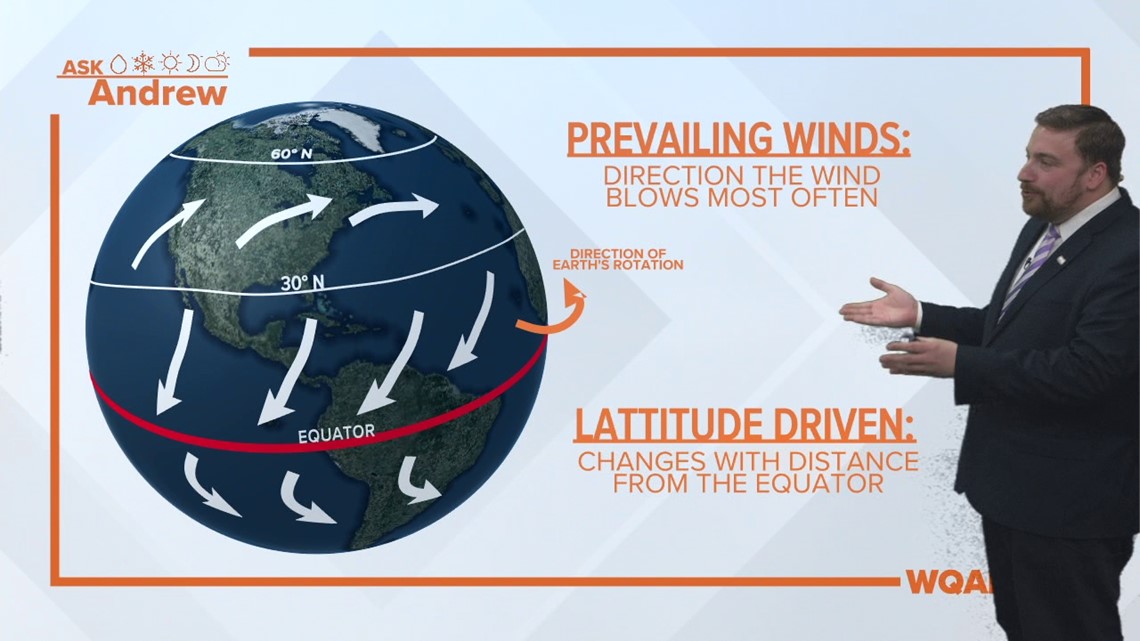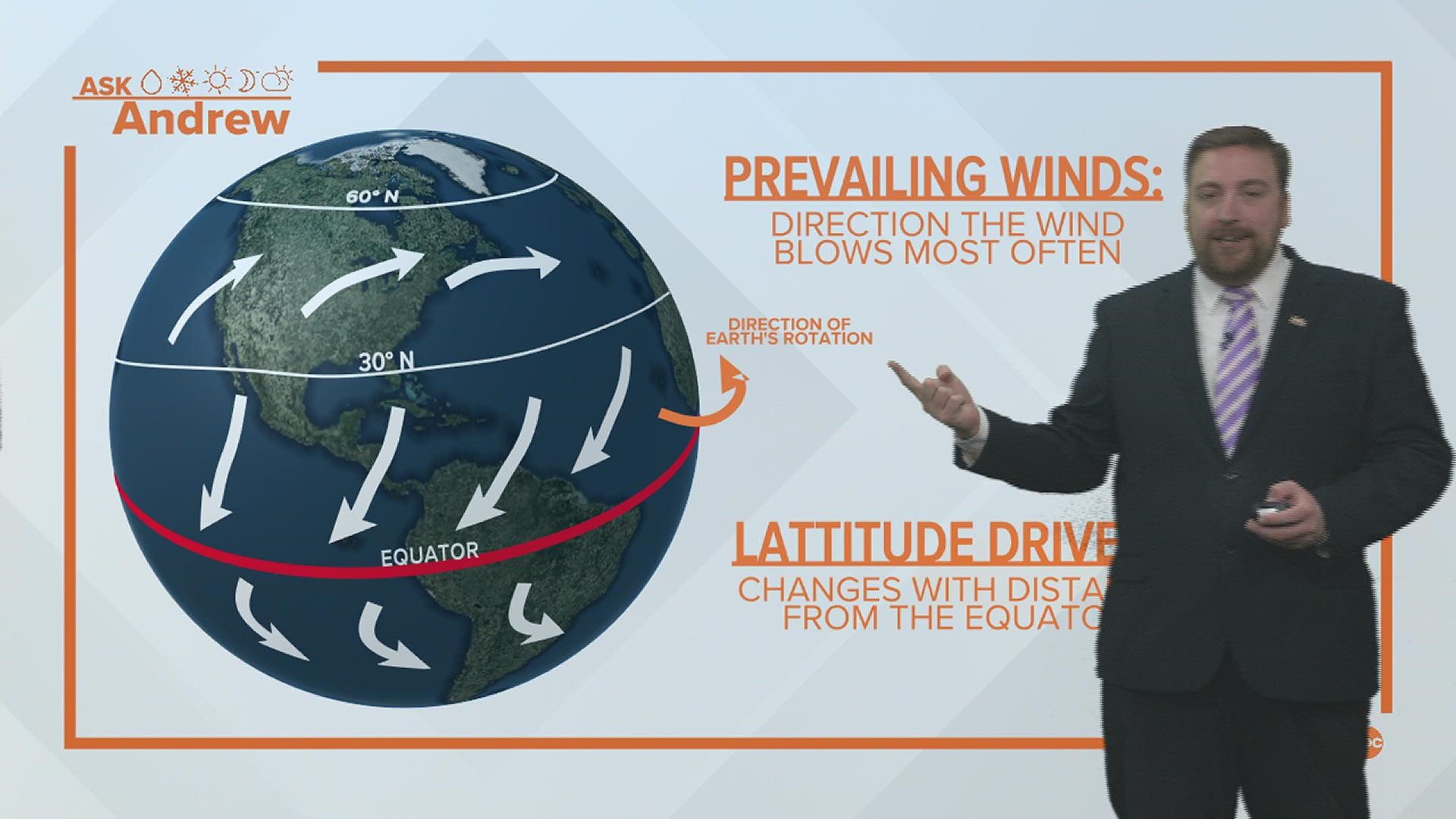MOLINE, Ill. — Storm systems move across the U.S. on a daily basis, but why do they only tend to move from west to east despite the fact that the winds can blow in all different directions? Janae from Clinton, Iowa asks this great question!
Fair warning: What I'm about to explain is a fairly, complex topic. I'll try and keep things simple and straightforward. Let's go!
Changes in pressure create what we know as "wind" in the atmosphere, but the direction in which those winds move is influenced by the Coriolis effect. This is a fancy term that essentially means the path of a moving object, in this case, air, is impacted by the rotation of the Earth.


A good, real-life example of this is the merry-go-round you'd find on a typical playground. The person standing in the middle feels very little in the way of "pull" towards any direction. However, someone standing near the outer edge of the merry-go-round experiences a much larger force that "pulls" them towards the outside of the merry-go-rounds rotation path. Now imagine this rotating, pulling in all different directions as it does. Hence, why the wind can and often does blow in several different directions.


Now that we've got that out of the way, let's talk about the prevailing winds. These represent the usual wind flow in an area or region. The prevailing wind direction here across the U.S. is from west to east, which explains why most storm systems move in that direction. However, depending on certain factors, such as jet stream placement and positioning, some storm systems can move from south to north, and even east-to-west!

